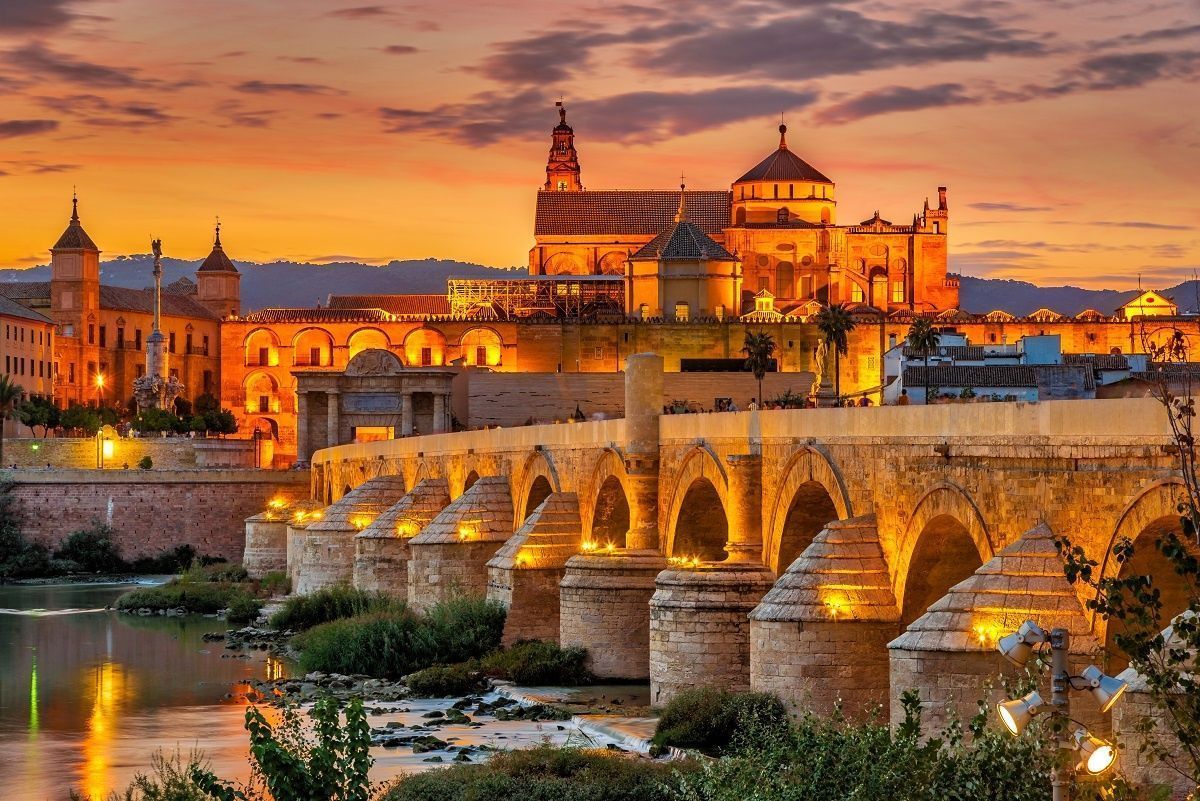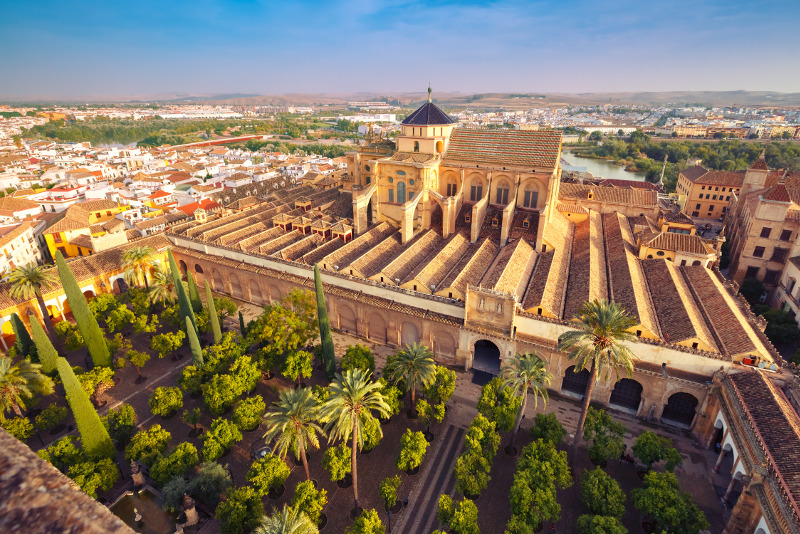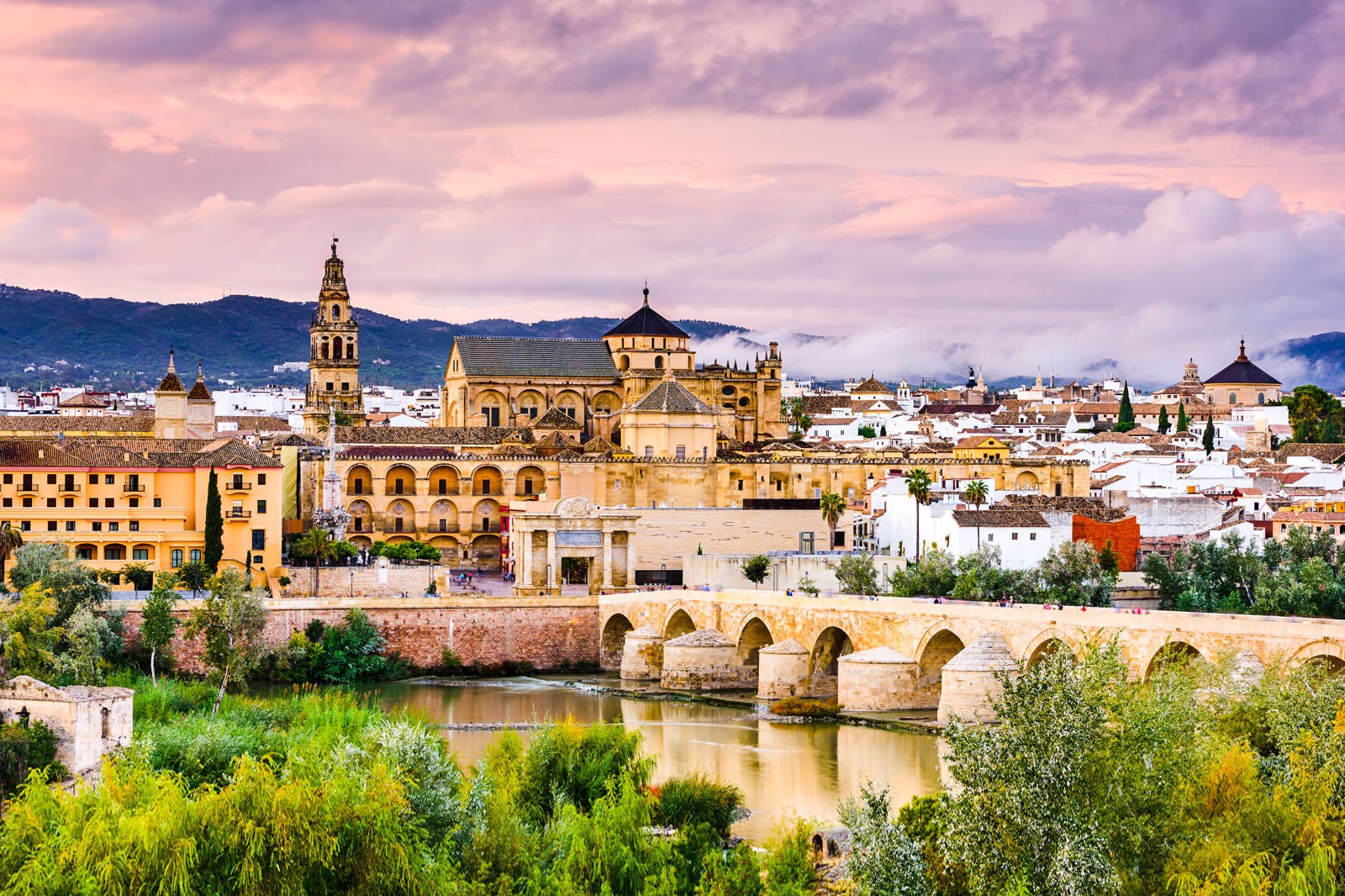
Córdoba, is a city in Andalusia, southern Spain, and the capital of the province of Córdoba. It is the third most populated municipality in Andalusia, after Seville and Málaga, and the 11th overall in the country.
It was a Roman settlement on the right bank of the Guadalquivir, taken over by the Visigoths, followed by the Muslim conquests in the eighth century and later becoming the capital of the Umayyad Caliphate of Córdoba. During these Muslim periods, Córdoba was transformed into a world leading center of education and learning, producing figures such as Averroes, Ibn Hazm, and Al-Zahrawi, and by the 10th century it had grown to be the second-largest city in Europe. Following the Christian conquest in 1236, it became part of the Crown of Castile. Córdoba is home to notable examples of Moorish architecture such as the Mezquita-Catedral, which was named as a UNESCO World Heritage Site in 1984 and is now a cathedral. The UNESCO status has since been expanded to encompass the whole historic centre of Córdoba, Medina-Azahara and Festival de los Patios. Córdoba has more World Heritage Sites than anywhere in the world. Much of this architecture, such as the Alcázar and the Roman bridge has been reworked or reconstructed by the city’s successive inhabitants. Córdoba has the highest summer temperatures in Spain and Europe, with average high temperatures around 37 °C in July and August.
The history of Cordoba.

The first traces of human presence in the area are remains of a Neanderthal Man, dating to c. 42,000 to 35,000 BC. Pre-urban settlements around the mouth of the Guadalquivir river are known to have existed from the 8th century BC. The population gradually learned copper and silver metallurgy. The first historical mention of a settlement dates to the Carthaginian expansion across the Guadalquivir. Córdoba was conquered by the Romans in 206 BC.
In 169 BC, Roman consul Marcus Claudius Marcellus (grandson of Marcus Claudius Marcellus, who had governed both Hispania Ulterior and Hispania Citerior, respectively), founded a Latin colony alongside the pre-existing Iberian settlement. The date is contested; it could have been founded in 152 BC. Between 143 and 141 BC the town was besieged by Viriatus. A Roman forum is known to have existed in the city in 113 BC. The famous Cordoba Treasure, with mixed local and Roman artistic traditions, was buried in the city at this time; it is now in the British Museum.
The Geography of Cordoba.

Córdoba is located in the south of the Iberian Peninsula, in the depression formed by the Guadalquivir river, that cuts across the city in an east-north east to west-south west direction. The city of Córdoba lies in the middle course of the river. Three major landscape units in the municipality include the Sierra, the Valley proper and the Campiña. The differences in elevation in the Valley are very small, ranging from 100 and 170 metres above sea level, with the city proper located at an average altitude of roughly 125 metres above sea level. The landscape of the valley is further subdivided in the piedmont connecting with the Sierra, the fluvial terraces and the most immediate vicinity of the river course.
Places to see in Cardoba.

Roman:
The Roman Bridge, over the Guadalquivir River, links the area of Campo de la Verdad with Barrio de la Catedral. It was the only bridge of the city for twenty centuries, until the construction of the San Rafael Bridge in the mid-20th century. It was initially built in the early 1st century BC during the reign of emperor Augustus but significantly rebuilt in the 8th century under Umayyad rule. It has a length of about 250 m and has 16 arches.
Minaret of San Juan:
Built in 930 AD, the mosque that this minaret adorned has been replaced by a church and the minaret re-purposed as a tower. It retains characteristics of Islamic architecture in the region, including a double horseshoe-arch windows.
Mills of the Guadalquivir:
Along the banks of the Guadalquivir are the Mills of the Guadalquivir, an array of watermills from different periods that used the power of the water current to grind flour. They include the Albolafia, Alegría, Carbonell, Casillas, Enmedio, Lope García, Martos, Pápalo, San Antonio, San Lorenzo and San Rafael mills.
Calahorra Tower:
The Calahorra is a fortified tower standing at the southern end of the city’s Roman Bridge. Its original construction is attributed to the Almohad period. It now houses the Al-Andalus Living Museum, a museum on the cultural achievements of Al-Andalus.
Caliphal Baths:
Near the Alcázar de los Reyes Cristianos, on the site of the former Islamic-era Alcázar, are the Caliphal Baths, a partly-reconstructed hammam complex created in the 10th century and subsequently expanded. The archeological site has been open as a museum since 2006.
Places you should go and visit in Cordoba.
- Mosque-Cathedral of Córdoba
- C. Cardenal Herrero, 1, 14003 Córdoba,
- https://goo.gl/maps/E6mR8FNK5wzRWSMG8
- Roman Bridge of Córdoba,
- Av. del Alcázar, s/n, 14003 Córdoba,
- https://goo.gl/maps/PpfKv8fL6o8xSjsq5
- Palacio de Viana
- Pl. de Don Gome, 2, 14001 Córdoba,
- https://goo.gl/maps/DuThCmvzBd7V9gy96
- Alcazar of the Christian Monarchs,
- Pl. Campo Santo de los Mártires, s/n, 14004 Córdoba
- https://goo.gl/maps/zGKB1WVMotuhjFgj6
- Murallas del Castillo de la Judería
- 14004 Córdoba,
- https://goo.gl/maps/wEsewopi6jjmrBJ68
- Puerta del Puente
- Pl. del Triunfo, s/n, 14003 Córdoba,
- https://goo.gl/maps/WFChWHcbEXusES3r7

 Any question?
Any question?